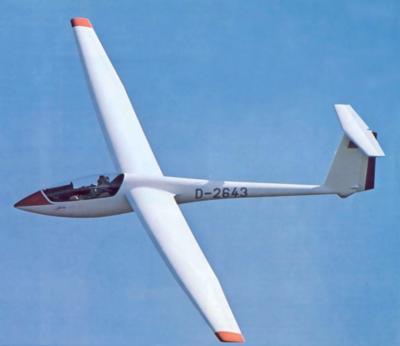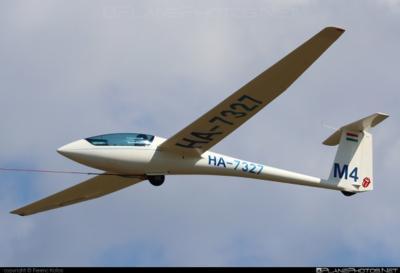Wed, Oct 11, 2023
Devil Complacency
The NTSB has released its final report on a 16 April 2022 accident in which a Schleicher ASW-19B glider was substantially damaged and its Private Pilot rated operator (and sole occupant) was fatally injured shortly after departing Jacksonville, Florida’s Herlong Recreational Airport (HEG).

The accident-aircraft was operated as a personal flight under Part 91 of the Federal Aviation Regulations.
In its report, the NTSB set forth:
“Shortly after the tow airplane and the glider became airborne, the pilot of the glider released from the tow plane about two-hundred-feet above ground level, then entered a left turn back toward the runway, during which the glider impacted terrain. Witnesses to the accident described the glider’s takeoff as “abnormal” and “erratic” and reported that the glider climbed above the tow plane twice before the glider pilot released from tow.
“Post-accident examination of the glider revealed that the elevator control was not connected as required by preflight assembly procedures, which would have resulted in the pilot’s inability to control the glider’s pitch attitude. According to the tow pilot, the glider pilot had assembled the glider by himself—as he had done many times before—on the morning of the accident. It is likely that the pilot, had he completed a positive control check after assembling the aircraft, would have identified the disconnected elevator control.

“Toxicology testing identified two sedating drugs, cetirizine (Zyrtec) and trazodone (an antidepressant), in the pilot’s cavity blood and urine; however, the pilot’s use of these medications most likely did not contribute to the accident.”
The NTSB determined the accident had likely been caused by the pilot’s improper preflight assembly of the glider’s elevator control, which occasioned a loss of pitch control on takeoff. The Board ascribed the accident, also, to the pilot’s failure to complete a preflight positive control check, which would have identified the disconnected elevator control.
More News
From 2023 (YouTube Version): Legacy of a Titan Robert (Bob) Anderson Hoover was a fighter pilot, test pilot, flight instructor, and air show superstar. More so, Bob Hoover was an i>[...]
Get The Latest in Aviation News NOW on Instagram Are you on Instagram yet? It's been around for a few years, quietly picking up traction mostly thanks to everybody's new obsession >[...]
Aero Linx: B-52H Stratofortress The B-52H Stratofortress is a long-range, heavy bomber that can perform a variety of missions. The bomber is capable of flying at high subsonic spee>[...]
Altimeter Setting The barometric pressure reading used to adjust a pressure altimeter for variations in existing atmospheric pressure or to the standard altimeter setting (29.92).>[...]
"Knowing that we play an active part in bettering people's lives is extremely rewarding. My team and I are very thankful for the opportunity to be here and to help in any way we ca>[...]
 Classic Aero-TV: Remembering Bob Hoover
Classic Aero-TV: Remembering Bob Hoover ANN FAQ: Follow Us On Instagram!
ANN FAQ: Follow Us On Instagram! ANN's Daily Aero-Linx (05.15.24)
ANN's Daily Aero-Linx (05.15.24) ANN's Daily Aero-Term (05.15.24):Altimeter Setting
ANN's Daily Aero-Term (05.15.24):Altimeter Setting Aero-News: Quote of the Day (05.16.24)
Aero-News: Quote of the Day (05.16.24)




